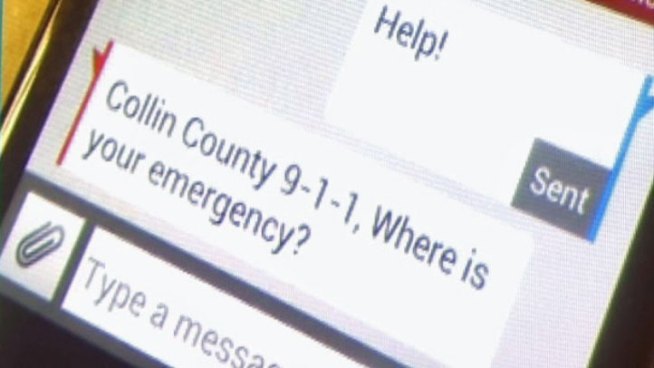This is clearly the way of the future, though I admit that I myself would be a bit leery of using it right now.
With eight of 10 Americans using their cellphones to send or receive text messages, some emergency response centers are updating their technology. Among them are centers in 12 Texas counties, hoping to accommodate situations in which calling 911 may be risky or impossible.
The text-to-911 service is an early step in a national initiative to modernize the emergency call system. The initial deployment in Texas, where the service is available at 27 call centers for Verizon or T-Mobile users, is one of the largest so far in the country.
Text-to-911 technology, which allows a user to send a text to 911, also makes emergency response more accessible to the deaf community. Phone calls remain the priority, officials said, because voice calls have better location-targeting capabilities.
[…]
North Texas counties were among the early adopters, partly because the call centers run by the North Central Texas Council of Governments already had an Internet-based calling system that enabled the cost-free installation of text-to-911. Call centers with older equipment would need to spend anywhere from $80,000 to $8 million to enable the service, depending on their size, said Christy Williams, the chief 911 program officer with the council.
LeAnna Russell, the system’s 911 database supervisor, said that while the several 911 texts sent in North Texas so far have not been the most dramatic of circumstances, they have been important. “We’re just glad they’re using the system,” she added.
Williams, who will become the president of the National Emergency Number Association next month, said the long-term goal was to make sure emergency response technology kept up with cellular technology used by consumers.
“We’re ripping out and replacing an infrastructure that’s over 45 years old,” she said. “Once that’s done, we can provide enhanced features for citizens and public safety responders.”
Potential future advances in 911 technology include incorporating video and photo messaging in emergency response systems and allowing different 911 call centers to share maps and databases, which could cut costs and improve efficiency, Fontes said.
“In a next-generation 911 environment,” he said, “when a car crash happens, people could move around, take pictures of the scene and the license plates, and all of this information will be pushed through the responders and hospitals before they even arrive.”
My initial reaction to this was one of skepticism – I thought, if I’m having an emergency, I’d rather have a live person I can talk to on the other end of the line – but the more I think about it, the more I can see the utility of this. For one thing, texting would be mighty handy in any situation where making noise could be dangerous. For another, in the context of an app you could attach a photo or other useful evidence, as you now can for non-emergency purposes as with Houston’s 311 app. Down the line I could imagine integrating Skype or Facetime or some other video chat function. Not many people use this now, but that will surely change. I figure by the time this is rolled out nationally, it will be an indispensable tool in the kit.

